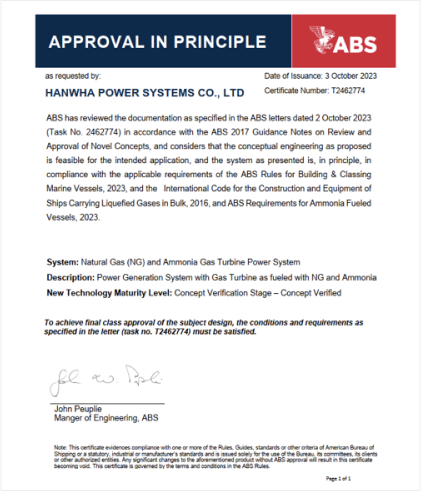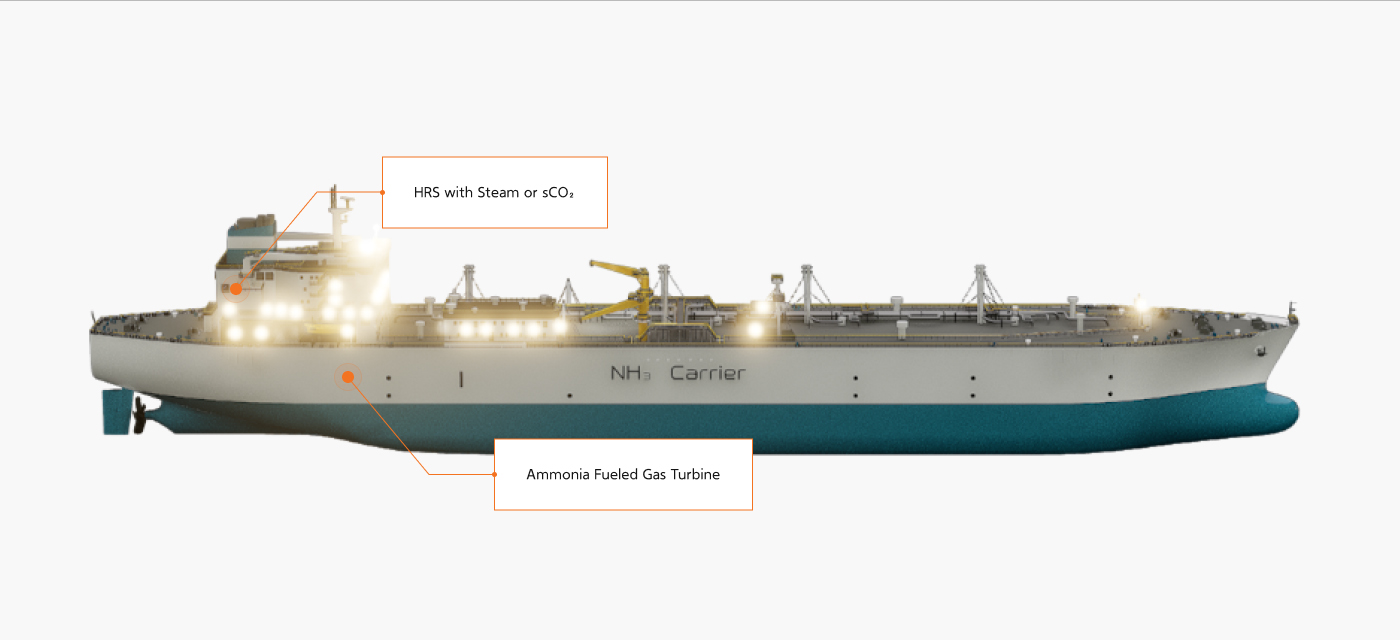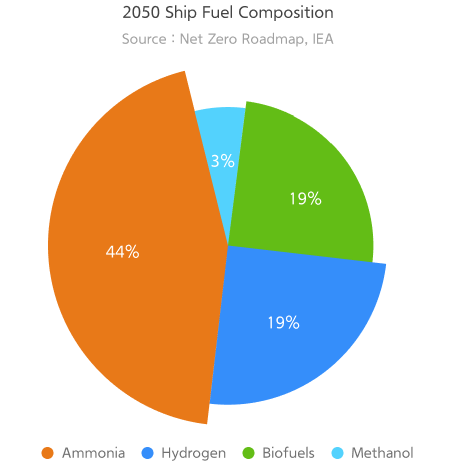Propulsion-Power Systems
NH₃ Gas Turbine Propulsion System
Ammonia Gas Turbine
Achievement
Although nitrogen oxides(NOx) from ammonia combustion are major air pollutants, our proprietary eco-friendly ammonia turbine meets IMO's strict exhaust gas regulations without additional SCR equipment.


Application
Furthermore, it serves as a definitive alternative for fuel conversion, applicable to various vessels, including gas carriers and container ships.
We are the optimal partner for both new ship construction and vessel retrofitting.
LNG carriers, LPG carriers, ammonia carriers(VLAC), container ships, bulk carriers, tankers, etc. * Capability to convert existing vessel propulsion systems to eco-friendly(zero-carbon) propulsion systems
Advanced Combined Cycle System(sCO₂)
Achievement
Hanwha is building a 'Zero-Carbon Ship Value Chain' encompassing propulsion system manufacturing, shipbuilding, and transportation to achieve maritime decarbonization through zero-carbon fuel technology.

Application
Carbon emission regulations by the International Maritime Organization(IMO) and EU are becoming stricter, with countries implementing detailed strategies to achieve carbon neutrality in international shipping by 2050.
Consequently, demand for zero-carbon propulsion systems will surge dramatically. The sCO₂ power system leads marine zero-carbon power generation by converting waste energy from ammonia(NH₃) gas turbines into electricity and supplying additional power to ship propulsion systems.
Furthermore, Small Modular Reactors(SMR), developed as a fourth-generation nuclear power by many global companies, will play a crucial role in future zero-carbon electric-powered large container ships. Our sCO₂ power system applies to SMRs, serving as a power conversion system that transforms heat into electricity, staying ahead of global eco-friendly trends.
